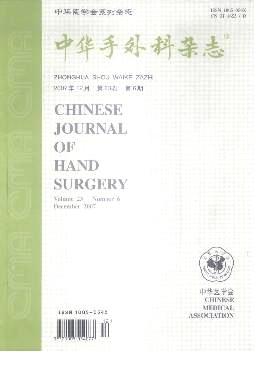The epidemiological study of neonatal brachial plexus injury in Guangxi, China
引用次数: 0
Abstract
Objective To analyze the epidemiological characteristics and risk factors of neonatal brachial plexus injury in Guangxi. Methods A retrospective study was conducted on 114 cases of neonatal brachial plexus injury recruited from twelve hospitals in Guangxi between January 2007 and December 2017. The basic situation of the mothers before pregnancy, during pregnancy and during childbirth was analyzed. Results The average birth weight of the children was (4 056.49±701.57) g, of which 61 cases had total brachial plexus injury. The average BMI before pregnancy of the mothers was (22.83±3.23) kg/m2 and the average weight gain during pregnancy was (13.68±3.41) kg. There were 80 cases of shoulder dystocia and 59.65% of the mothers delivered in county or township hospitals. Conclusion The birth weight, maternal weight before and during pregnancy, and delivery mode are all related to neonatal brachial plexus injury. It is necessary to strengthen health education, control the weight of pregnant women before and during pregnancy, reduce the incidence of macrosomia, strengthen the monitoring of high-risk pregnant women, and carefully use the devices for midwifery. Key words: Infant, newborn; Brachial plexus; Epidemiology; Guangxi广西新生儿臂丛神经损伤的流行病学研究
目的分析广西新生儿臂丛神经损伤的流行病学特点及危险因素。方法回顾性分析2007年1月至2017年12月广西12家医院收治的114例新生儿臂丛神经损伤病例。分析了产妇孕前、孕期和分娩的基本情况。结果新生儿平均出生体重为(4 056.49±701.57)g,全臂丛损伤61例。孕妇孕前平均BMI为(22.83±3.23)kg/m2,孕期平均增重为(13.68±3.41)kg。肩难产80例,在县、乡卫生院分娩的产妇占59.65%。结论新生儿出生体重、孕前、孕期体重、分娩方式均与新生儿臂丛神经损伤有关。应加强健康教育,控制孕妇孕前和孕期体重,减少巨大儿发生率,加强对高危孕妇的监测,慎用助产器具。关键词:婴幼儿;新生儿;臂神经丛;流行病学;广西
本文章由计算机程序翻译,如有差异,请以英文原文为准。
求助全文
约1分钟内获得全文
求助全文

 求助内容:
求助内容: 应助结果提醒方式:
应助结果提醒方式:


